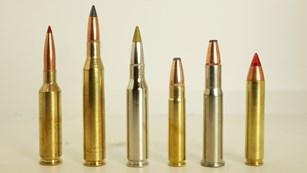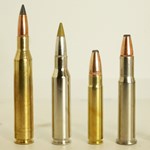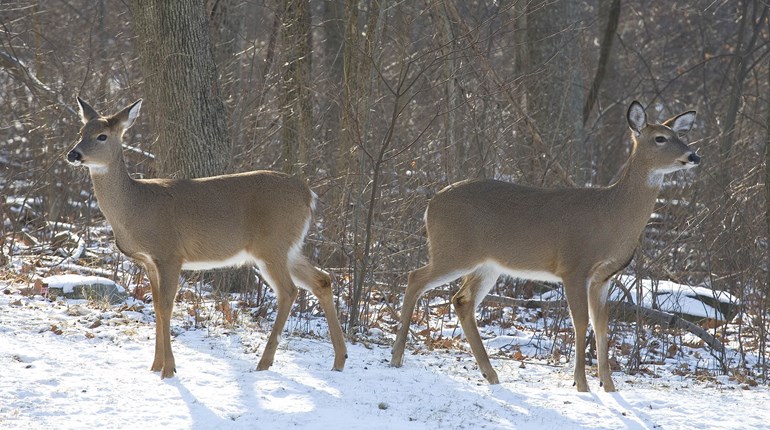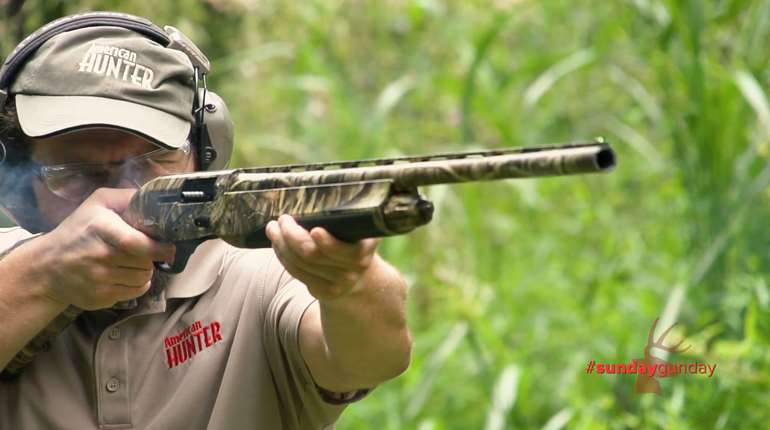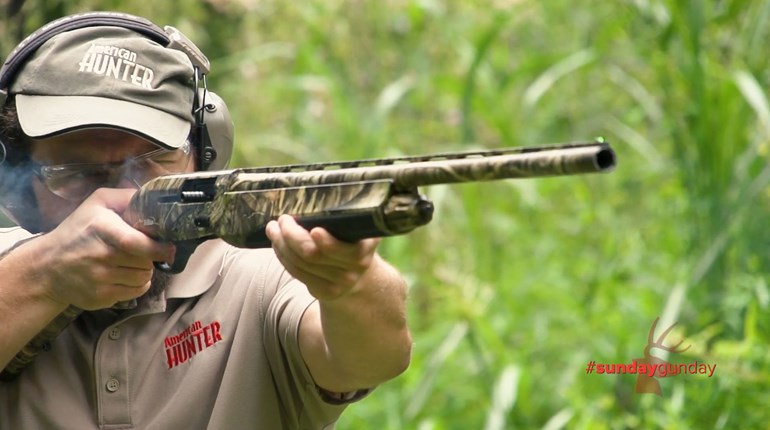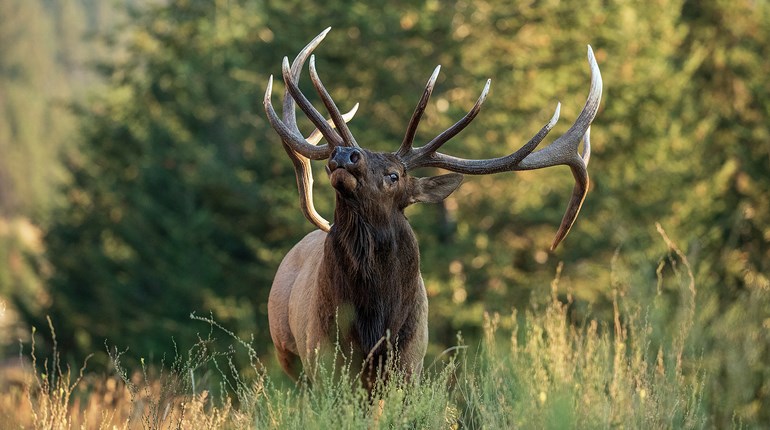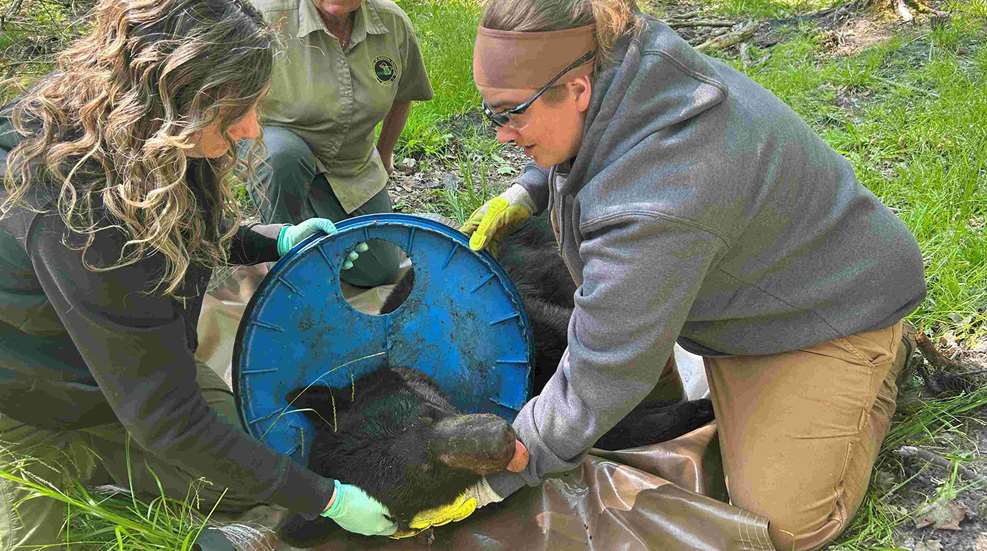
Wildlife biologists in Michigan’s Montmorency County recently removed a plastic lid from the neck of a young black bear that had carried the encumbrance around for two years. It’s unknown exactly where or how the male bear got its head stuck in a 5-inch hole in the lid.
The blue plastic lid is similar to those that fit 55-gallon drums used by hunters to bait bear, however state regulations mandate bait containers—which can only be used on private land—may only have holes that are either 1 inch or less in diameter or 22 inches or greater in diameter. It more likely was used by a landowner to store a material that attracts bears, such as chicken feed.
“Container openings of a certain size can result in bears and other wildlife getting their heads or other body parts stuck in them, leading to injury or death,” said Cody Norton of the Michigan Department of Natural Resources, the DNR’s bear, furbearer and small game specialist. “It’s important to remember that the opening diameter is more important than the size of the container.”
Property owners are encouraged to recycle or crush containers, such as empty cheeseball tubs, and by being “BearWise” about securing garbage, Norton said. There have been other cases in Florida, Wisconsin and Tennessee in which bears got their heads stuck in food containers.
Biologists at the DNR’s Atlanta field office became aware of the bear in 2023 after seeing trail camera photos of the then-cub with its head stuck in the lid. The bear would prove elusive over the next two years, occasionally appearing on other trail camera photos but then disappearing after a day or so.
Then, in late May, a Hillman resident spotted the bear in trail camera photos taken on his wooded acreage and alerted the DNR. With the landowner’s permission, state biologists set up a baited enclosure trap and caught the animal safely on June 2. After anesthetizing the bear, they cut the lid off its neck and collected body measurements and other data.
The bear weighed 110 pounds, which is fairly standard for a two-year-old bear that’s still growing. It had significant scarring and an abscess on its neck but otherwise seemed healthy. Once the anesthesia wore off, the bear was released back onto the property.
Norton said the trapping, chemical immobilizing and data-collecting effort provided DNR staff with valuable training and information that can inform future research and bear-management strategies. Michigan is home to about 13,000 black bears—1,700 of them in the northern Lower Peninsula.




